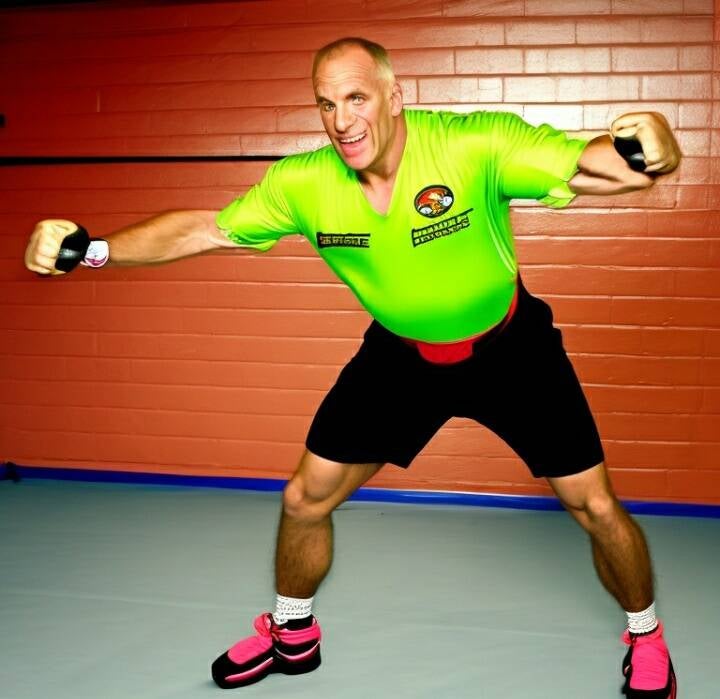
Self-defense classes have become popular in recent times, as people have become more aware of the need to protect themselves in the face of danger. However, while taking a self-defense class can be helpful in learning basic techniques to defend oneself, it's important to note that it doesn't automatically turn you into a fighter. This article will explore why taking self-defense classes isn't the panacea to becoming a skilled fighter.
Self-defense classes teach basic techniques
When you sign up for a self-defense class, you'll learn some basic techniques of defending yourself in a dangerous situation. These techniques often include blocking, striking, punching, and kicking, among others. However, while these techniques are useful, they don't cover the extensive combat techniques that fighters often use in the ring, such as wrestling moves, grappling, and submission.
Self-defense classes don't usually go through the rigors of training and the discipline required in becoming a skilled fighter. While learning self-defense may be useful in specific situations, to become a fighter requires more nuanced and broader training. For instance, a fighter's training often involves physical conditioning, mental preparation, and specific fighting styles that are not typically covered in self-defense classes.
There is less focus on stamina development
Endurance and stamina development are vital components of becoming a fighter. However, it's rare to see self-defense classes that prioritize stamina development or emphasize its importance. In contrast, fighters often undergo hours of rigorous physical training specifically dedicated to building their stamina.
Stamina is a critical component of any combat sport or fight. Regardless of how well you can punch or kick, if you don't have the endurance to keep going, you're unlikely to win a fight. As such, while self-defense classes may teach you basic moves, it may not equip you with the stamina required to execute these moves effectively in combat.
There is less emphasis on mental toughness
Most self-defense classes focus solely on physical techniques and ignore the mental aspect of fighting. However, this mental toughness is crucial in becoming an effective fighter. Fighting often involves fear, self-doubt, and a range of other emotions that can affect your performance. If you're not mentally prepared to handle these emotions, you're unlikely to perform well in a fight.
Mental toughness is also not something that is developed overnight. In contrast, it takes years of training and practice to get to a point where you can adequately manage your emotions in a fight. While self-defense classes may touch on the importance of mental toughness, they don't typically offer the comprehensive training needed to develop it.
Limited training time
A good fighter typically undergoes years of dedicated training before reaching a level of proficiency. Training often takes place in specialized training academies, with several hours a day, hundreds of days a year invested in training. As a result, it's unrealistic to expect that taking a few self-defense classes will make you a proficient fighter.
Training time is a limited element in boosting fighting skills. Even professional fighters continue their training throughout their careers, evolving their techniques and adding new ones that can help them compete better. Without sustained training and practice, it's almost impossible to reach the level of skill exhibited by dedicated fighters.
Self-defense classes may create a false sense of security
One of the dangers of self-defense classes is that they can create a false sense of security. Students may assume that they're equipped with the necessary skills to defend themselves, even in situations where these skills may not be adequate. For instance, fighting multiple attackers, or fighting someone who has more significant combat training.
Students may make the mistake of thinking that the techniques taught in self-defense classes are effective in all scenarios. In reality, the reality of fighting is much more nuanced, and there are various factors to consider beyond the techniques themselves.
Combat situations are dynamic and unpredictable, and the effectiveness of a technique may differ based on the situation. As such, taking self-defense classes alone may create an illusion of preparedness that could be dangerous in real-life situations.
Taking a self-defense class can be an excellent first step in learning how to protect oneself. However, it's important to remember that self-defense classes don't automatically turn you into a skilled fighter. The techniques taught in self-defense classes may be useful in specific situations, but becoming a fighter requires years of dedicated training and practice.
It's also essential to note that fighting goes beyond physical techniques, and there's a mental and emotional aspect to it that requires discipline and training. Stamina, mental toughness, and training time are all crucial components in developing fighter skills, and self-defense classes may not cover them adequately.
While taking self-defense classes, it's crucial to recognize that the training may be limited, and students will need to continue their training or seek additional training to develop their fighting skills. Moreover, self-defense classes may create a false sense of security, leading students to believe that they're prepared for any fighting scenario. As such, it's crucial to recognize that self-defense classes are only the beginning, and sustained training and practice are the keys to becoming fighters.
Add comment
Comments